#steering rack and pinion
Explore tagged Tumblr posts
Text

A Nissan Pathfinder’s steering rack and pinion is leaking and needs to be replaced.
The rack and pinion links together with the steering knuckles. It’s one of the areas where power steering fluid can leak from.
You should bring your vehicle to an auto repair shop if you experience any steering problems or notice drops of power steering fluid near it.
#nissan pathfinder#steering rack and pinion#power steering fluid leaks#prince william county virginia#hometowne auto repair and tire
0 notes
Text
Electric Power Steering Gear: Enhancing Vehicle Performance and Control
How Does Electric Power Steering Gear Work?
The Electric Power Steering Gear system relies on sensors to detect the driver’s input and road conditions. The electric motor then adjusts the steering effort accordingly, ensuring smooth and responsive handling. Key components include:
Steering Rack and Pinion – Converts the rotational motion of the steering wheel into linear motion to turn the wheels.
Electric Motor – Provides power-assisted steering, reducing the effort required to maneuver the vehicle.
Control Module – Processes data from sensors and adjusts steering assistance in real time.
Torque Sensor – Measures the force applied to the steering wheel and helps regulate assistance levels.
Advantages of Electric Power Steering Gear
Upgrading to an Electric Power Steering Gear offers several benefits:
Improved Fuel Efficiency – EPS systems reduce engine load compared to hydraulic steering, enhancing fuel economy.
Precise Steering Control – Electronic adjustments allow for adaptive steering assistance, improving maneuverability.
Lower Maintenance Costs – Since there are no hydraulic fluids or pumps, EPS systems require less upkeep.
Enhanced Safety Features – Many EPS systems integrate with advanced driver assistance systems (ADAS) for greater road safety.
Find High-Quality Electric Power Steering Gear at Steering Rack China
At Steering Rack China, we provide premium Electric Power Steering Gear solutions designed for various vehicle models. Our products meet rigorous quality standards to ensure durability, reliability, and optimal performance.
Explore our wide range of steering components today at Steering Rack China and experience the benefits of advanced steering technology!
#rack and pinion steering system parts#audi power steering rack#Power Steering Rack and Pinion for Audi#AUDI Steering Gear Assembly Parts
1 note
·
View note
Text



Are you experiencing any steering problems?
It could mean there’s an issue with your vehicle’s rack and pinion. This component is connected to the steering knuckles, which turn the steering wheel left or right.
We installed a new one on a Honda Odyssey. Our technician determined that it needed to be replaced when he noticed it was leaking.
This is a good reason why you should have the rack and pinion inspected.
#steering problems#rack and pinion problems#honda odyssey#steves auto repair and tire#prince william county virginia
0 notes
Text
How to Find the Best Used Mini Auto Parts for Your Vehicle
The Best Used Mini Auto Parts for Your Vehicle
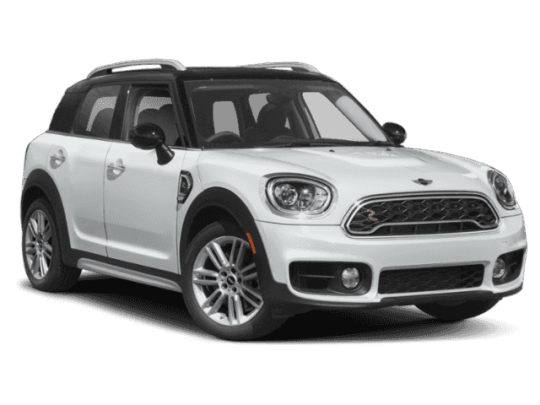
When it comes to car maintenance, a lot of people prefer to buy used auto parts. These Used Mini Auto Parts are often more affordable than new ones. In addition, they can be purchased from a supplier or automotive recycler near you. However, not all used auto parts are created equal. So it’s important to shop around before you buy.
If you’re shopping for a replacement auto part, it’s wise to shop at a traditional auto parts store. These stores have extensive knowledge of their products and can answer all your questions. Additionally, they will usually have manuals for the parts they sell.
They also have a large inventory of parts that are not sold online. This can save you a lot of time and effort, especially if you’re not familiar with the specific parts you need.
Aside from that, it’s always a good idea to look for a store that offers price matching. This means that if you find a better deal at another store, they will honor it and give you the discount!
When looking for a Used Mini Parts, it’s important to choose one that is in good condition. This is because Minis are not known for their longevity, but they can be reliable if you buy one that is in excellent shape and take care of it.
Moreover, it’s important to check for wear and tear on the interior and exterior of your car. A worn steering wheel or a faulty headlight can indicate a problem.
Important Used Mini Auto Parts
The Mini Cooper is a small family car that was originally designed and manufactured by BMW. It is a British style and design symbol.
Buying Used Mini Auto Parts online is an excellent way to save on your car maintenance costs and repair bills. We also provide helpful customer reviews and ratings to help you find the right part for your vehicle.
If you’re looking for Used Mini Cooper Car Parts, Feel free to contact: 425 999 3388
Mini Transmission
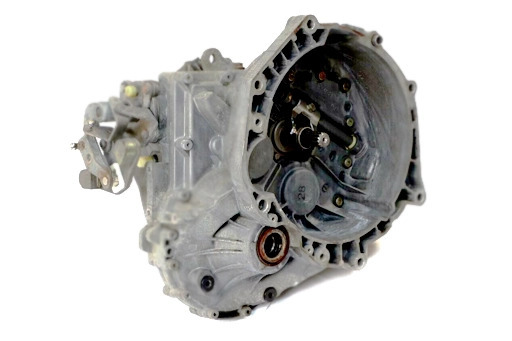
The transmission in your Mini Cooper is one of the most important components in your vehicle. If you notice any problems with it, it’s important to get them taken care of before they worsen.
If you hear any clunking, whining, or tapping sounds during idling, this could be an indication that there’s a problem with your transmission. It’s also a good idea to bring your MINI in for service if you notice that the gears are slipping as you accelerate.
The Mini Transmission is a complex machine that requires a lot of maintenance to function properly. It’s also prone to a number of issues, including leaking fluid and wear and tear.
If you’re looking for Used Mini Cooper Transmission, Feel free to contact: 425 999 3388
Mini Axle Assembly
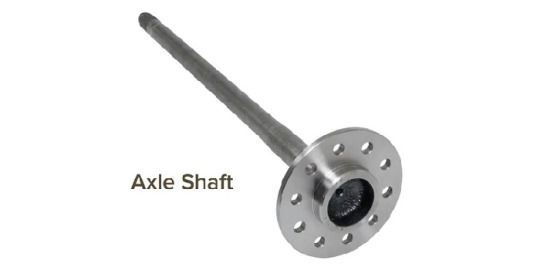
The Mini Axle Assembly is one of the most important components in your vehicle. It is used to support the wheels and other gears on your vehicle, and if it breaks, you’ll be out of luck.
Axles are commonly found in cars, trucks, and SUVs. They help to provide a smooth ride and make the car more efficient.
There are various types of axles and the most common is the semi-floating axle. This type of axle uses needle bearings and separate lip seals to allow the shafts to “float” in the housing.
This type of axle can support a lot of weight and is commonly found in half-ton and lighter 4x4 trucks. It is also easy to remove if the axle breaks.
If you’re looking for Used Mini Cooper Axle Assembly, Feel free to contact: 425 999 3388
Mini Differential Assembly
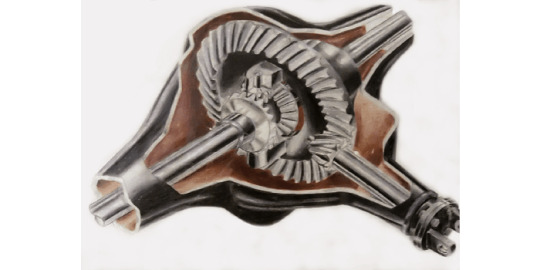
The Mini Differential Assembly is a vital part of the car's front and rear axle. It is designed in such a way that it allows the wheels to turn at different speeds and reduces the rotational speed of the drive shafts for improved traction.
Unlike most parts of your vehicle, the differential is not easily replaced. This is why it's important to have a good understanding of how it works before you buy one.
To ensure you don't get confused, here's a list of things to consider when buying a used differential. Using this information will help you find the right part for your vehicle and save you money in the long run.
If you’re looking for Used Mini Cooper Differential Assembly, Feel free to contact: 425 999 3388
Mini Suspension Cross Member
The Mini Suspension Cross Member is a vital part of your vehicle's structural system. Typically made of steel, these are bolted across the underside of your car to support its engine and transmission and keep body panels aligned.
A suspension consists of springs, shock absorbers and control arms that allow the driver to move the vehicle up and down. These parts also help transmit the weight of the vehicle and rest acceleration, braking and cornering forces.
To ensure that the suspension is able to handle all of your driving needs, it is important to choose the correct part for the job. At Prime Auto Parts, we stock a range of suspension parts to suit any car.
The suspension system of a vehicle comprises a wheel carrying member 2 for rotatable carrying a rear wheel 1 with a tire. It also includes a first lateral link 3 and a second lateral link 4 each extending in a transverse direction of the vehicle.
If you’re looking for Used Mini Cooper Suspension Cross Member, Feel free to contact: 425 999 3388
Mini Transfer Case

The Mini Transfer Case is a gearbox that distributes power from the transmission to the front and rear axles of a four-wheel drive vehicle. They are either gear-driven or chain-driven, depending on the manufacturer.
They also allow vehicles to switch between high-range and low-range gearing for off-road use. This can be very useful for severe off-roading.
A transfer case is a very important part of any four-wheel-drive car. It is very important to know what it does and how it works so you can get it fixed if needed.
A transfer case will often make grinding noises when turning if it is not working properly. It is a good idea to check it out as soon as possible before the problem becomes more serious.
If you’re looking for Used Mini Cooper Transfer Case, Feel free to contact: 425 999 3388
Mini Car Seats A used Mini Seat can be a great way to improve the appearance and comfort of your vehicle. There are many different types of seats to choose from, and you can find products with features like inflatable lumbar support and a built-in suspension for a more comfortable ride. Front Seats: When you're looking to replace your Mini's front seats, it's important to select a model that can handle the pounding of off-roading. These seats will often come with a variety of shock absorption features, including spring suspensions and foam padding. Rear Seats: While most Jeep vehicles only have five seats, some models have a third row of seating that can be folded down when you don't need them. These Used seats are typically made with sturdy, weather-resistant materials and are available in a wide range of styles, including bucket and low back.
If you’re looking for Used Mini Cooper Seats, Feel free to contact: 425 999 3388
Mini Drive Shaft
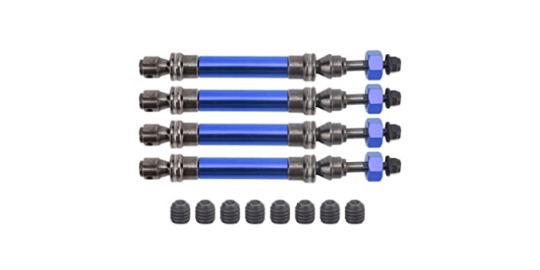
The Mini Drive Shaft is a vital component that helps to transfer torque from the transmission to the wheels. It can be found in a wide variety of vehicles, including cars, motorcycles, locomotives and marine vessels.
There are many different types of drive shafts, including telescoping drive shafts and fixed-type ones. Regardless of what type of drive shaft you have, it will need to be strong enough to withstand the bending forces that occur while your vehicle is moving forward.
If you have a bad drive shaft, it can cause a number of problems. It could potentially break, stop your car from moving forward or even cause you to lose control entirely. This can be very dangerous and should never be ignored.
If you’re looking for Used Mini Cooper Drive Shaft, Feel free to contact: 425 999 3388
Mini Cylinder Head
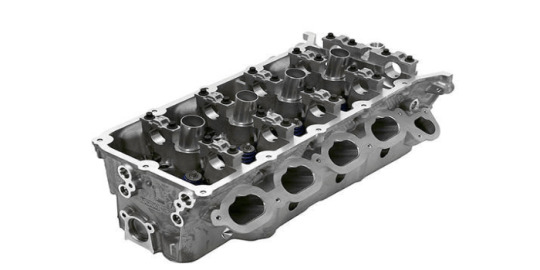
Mini Cylinder Head are an important part of engines. They ensure a smooth flow of lubricating fluid inside the engine, and also help in cooling it.
They are made from iron or aluminum and are bolted to the top of the cylinder block. They also house the spark plugs, valve train parts, and camshaft.
These cylinder heads are used in different types of car engines. They vary in layouts and also have different cooling methods.
The most common defect that cylinder heads can suffer from is overheating. This is caused due to either a loss of coolant or a problem with the head gasket.
There are several issues that cylinder heads can experience, such as a sudden drop in engine performance or misfiring cylinders. These issues can be identified using a method of measurement called the compression ratio.
If you’re looking for Used Mini Cooper Cylinder, Feel free to contact: 425 999 3388
Mini Steering Column
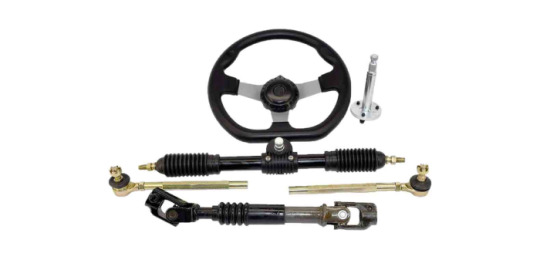
The Mini Steering Column is one of the key components in your vehicle. It connects your steering wheel to the rack and pinion, which in turn controls how your car turns.
It also serves to store all of your steering wheel accessories. If you notice a problem with your steering column, it's important to take it into a professional for repair as soon as possible.
Steering columns are available in a variety of sizes and shapes. It's important to get the right part for your vehicle and your budget.
Your steering column should be inspected and tested before it's put in place, as it is an essential component to the steering system of your vehicle. If it's not in good condition, it will affect the way your car turns and can make it difficult to drive. It may even cause a serious accident and damage to your car.
If you’re looking for Used Mini Cooper Steering Column, Feel free to contact: 425 999 3388
Mini Rack and Pinion
The Mini Rack and Pinion is a critical part of your vehicle's steering system. If it's faulty, you'll have trouble steering your car and could end up in a dangerous situation. Used Rack and Pinion are a simple assembly in your vehicle that allow your wheels to rotate from side to side when you turn your steering wheel. They use a small pinion gear connected to a long rack gear. They also connect to a tie rod that connects to the steering arm on the spindle of your car. They were invented in the 1930s and first came to the United States less than 50 years ago. They're a simpler design than the recirculating ball steering systems that came before them. Power steering is a great addition to a rack and pinion, but it adds complexity. It is a system of fluid-filled cylinders that are powered by hydraulic or electrical power to assist in turning your wheels. Steering fluid leaks, which are a common sign that your rack and pinion isn't working properly, usually indicate a problem with the fluid in the cylinders or on the steering rack itself. Leaks can be hard to spot, so check for a burning oil smell and look for a red or pink puddle on the ground under your car's rear end. If you're looking to get a quality used Rack and pinion for your Mini Cooper, Prime Auto Parts has you covered! Our remanufactured products have undergone a rigorous quality test, so you can be sure you're getting a used part that's as efficient as new.
If you’re looking for Used Mini Cooper Rack and Pinion, Feel free to contact: 425 999 3388
#Mini Rack and Pinion#Used Mini Cooper Steering Column#Used Mini Cooper Rack and Pinch#Mini Steering Column#Used Mini Cooper Cylinder#Mini Cylinder Head#Used Mini Cooper Drive Shaft#Mini Drive Shaft#Used Mini Cooper Seats#Mini Car Seats#Mini Transfer Case#Used Mini Cooper Transfer Case#Used Mini Cooper Suspension Cross Member#Mini Suspension Cross Member#Mini Differential Assembly#Used Mini Cooper Differential Assembly#Used Mini Cooper Axle Assembly#Mini Axle Assembly#Used Mini Cooper Transmission#Mini Transmission#Used Mini Auto Parts online#Mini Cooper#Used Mini Cooper Car Parts#Used Mini Parts#used auto parts#Prime Auto Parts
0 notes
Text
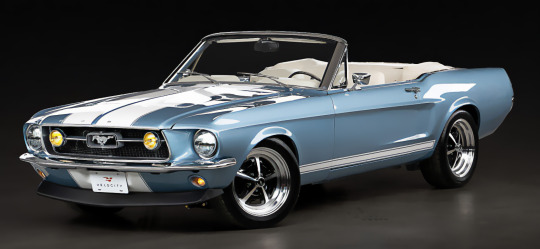
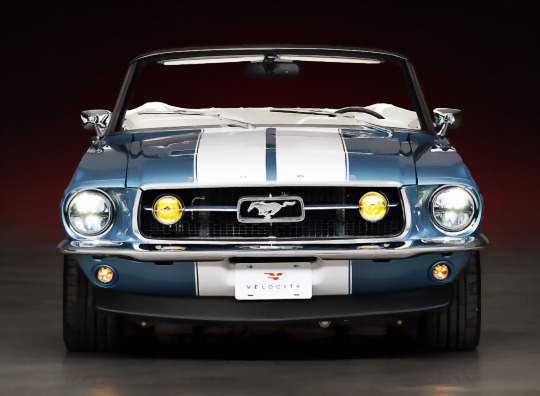

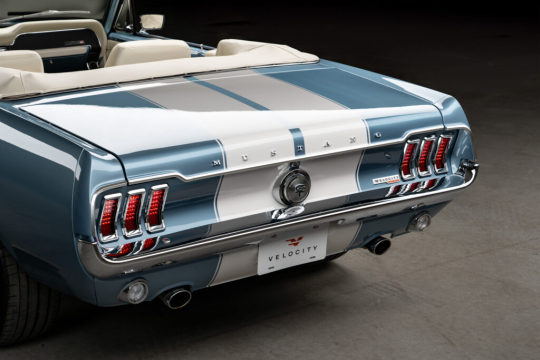
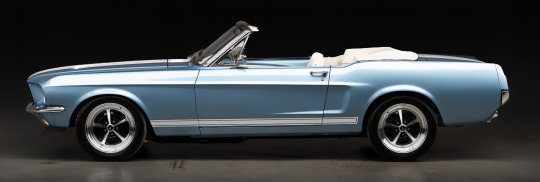

Velocity Signature Series Mustang Convertible, 2024. The Florida-based specialist tuner has added a convertible to their first generation Mustang Signature Series restomod range. The work includes fitting a contemporary 460hp 5.0 litre Coyote V8 with six-speed manual or 10-speed auto gearboxes. There's also new rack and pinion steering and a four-link rear axle with upgraded brakes, 17 inch wheels and a redesigned convertible top.
#Mustang#Ford Mustang#Velocity Signature Series Mustang Convertible#Velocity#Velocity Signature Series#Signature Series Mustang#Mustang Convertible#first generation#1960s style#restomod#Coyote V8#restoration#2024#custom car#modified car
720 notes
·
View notes
Text
Drives like a luxurious go-kart😍


De Tomaso Pantera interior.
177 notes
·
View notes
Text

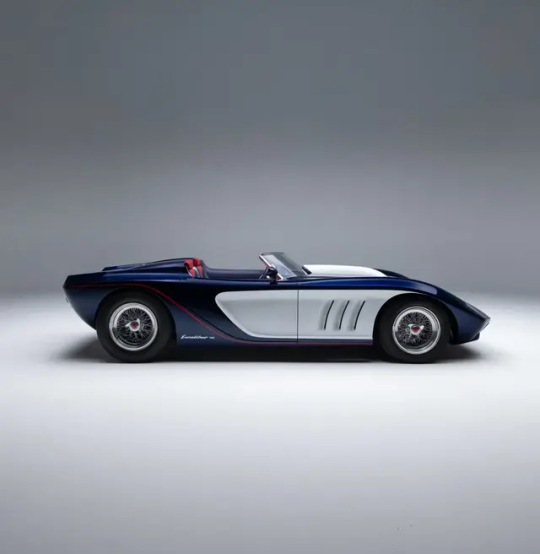
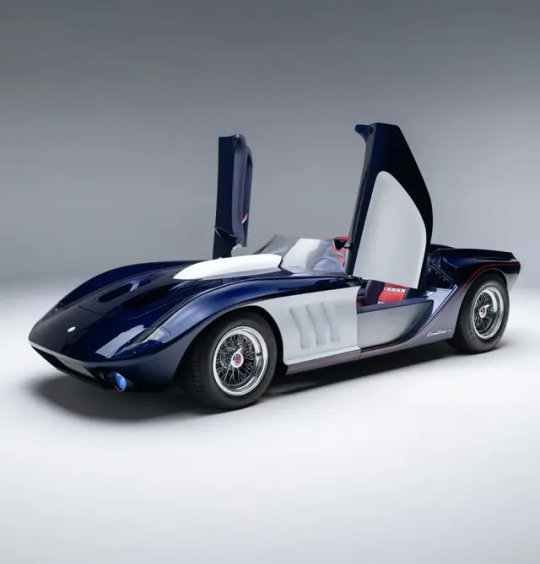
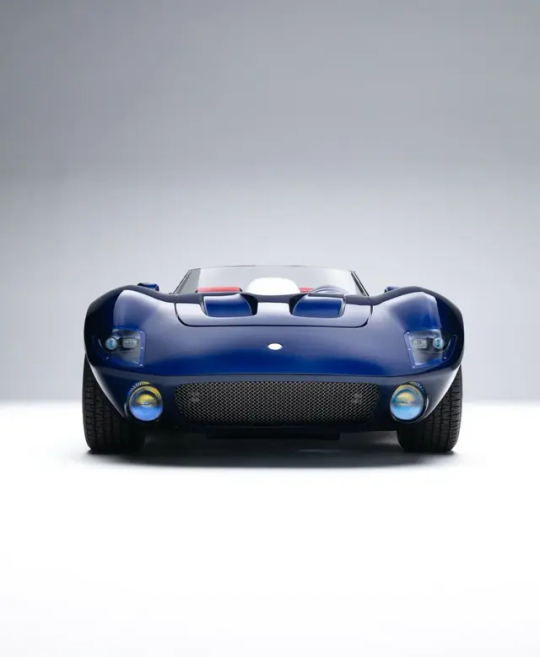
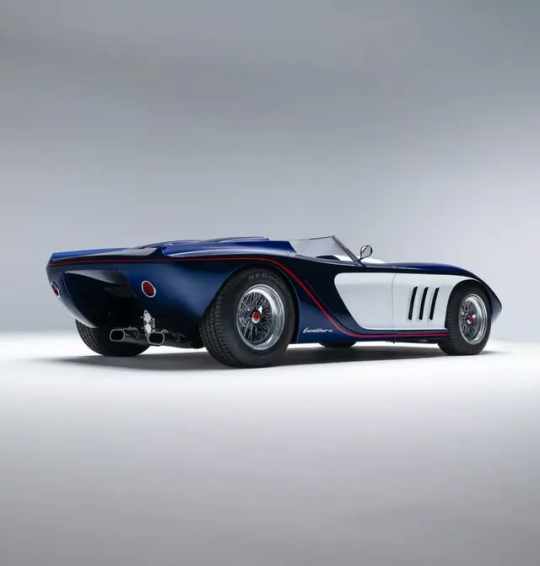
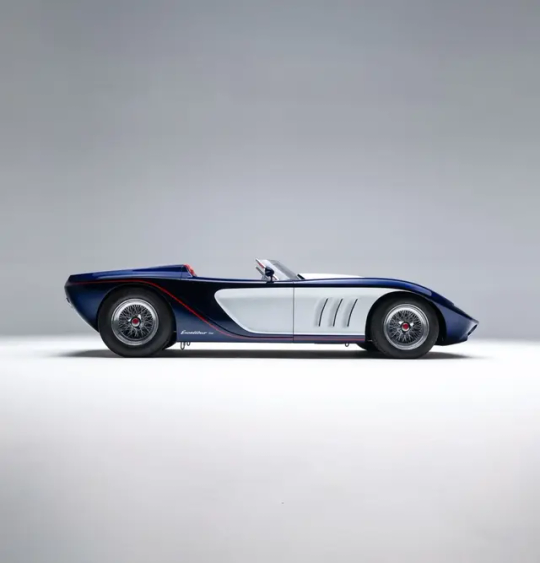



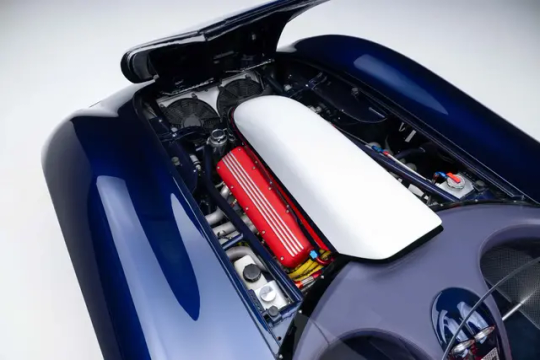
1962 Excalibur RS Roadster
The 1962 Excalibur RS Roadster is a unique car designed by Brooks Stevens, with the project completed in the 1990s by Stevens’ friend, Robert Shaw. It incorporates modern features like scissor doors, power steering, and a 5.7 liter GM V8 engine.
The Excalibur RS Roadster is based on the earlier 1961 Excalibur Hawk Coupe, which was built on a Studebaker chassis. The RS Roadster’s bodywork is hand-formed from aluminum, with a tubular steel spaceframe chassis developed by Chuck Rahn.
The car is powered by a 5.7 liter GM V8 crate engine with Edelbrock fuel injection, mated to a GM 700R4 automatic transmission. The vehicle has high-performance parts throughout including Wilwood disc brakes, power rack-and-pinion steering, and a custom-made exhaust system.
Images courtesy of Mecum
#art#design#luxury cars#luxury lifestyle#supercars#sport cars#luxurycars#luxurylifestyle#supercar#luxurycar#vintage cars#vintage car#roadster#excalibur#1962#excalibur RS#brooks stevens#robert shaw#mecum auctions#mecum#studebaker#chuck rahn
54 notes
·
View notes
Text
Rockets, Racecars, and the Physics of Going Fast

When our Space Launch System (SLS) rocket launches the Artemis missions to the Moon, it can have a top speed of more than six miles per second. Rockets and racecars are designed with speed in mind to accomplish their missions—but there’s more to speed than just engines and fuel. Learn more about the physics of going fast:

Take a look under the hood, so to speak, of our SLS mega Moon rocket and you’ll find that each of its four RS-25 engines have high-pressure turbopumps that generate a combined 94,400 horsepower per engine. All that horsepower creates more than 2 million pounds of thrust to help launch our four Artemis astronauts inside the Orion spacecraft beyond Earth orbit and onward to the Moon. How does that horsepower compare to a racecar? World champion racecars can generate more than 1,000 horsepower as they speed around the track.
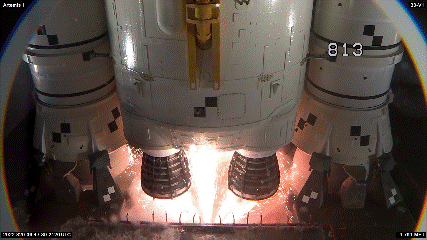
As these vehicles start their engines, a series of special machinery is moving and grooving inside those engines. Turbo engines in racecars work at up to 15,000 rotations per minute, aka rpm. The turbopumps on the RS-25 engines rotate at a staggering 37,000 rpm. SLS’s RS-25 engines will burn for approximately eight minutes, while racecar engines generally run for 1 ½-3 hours during a race.

To use that power effectively, both rockets and racecars are designed to slice through the air as efficiently as possible.
While rockets want to eliminate as much drag as possible, racecars carefully use the air they’re slicing through to keep them pinned to the track and speed around corners faster. This phenomenon is called downforce.
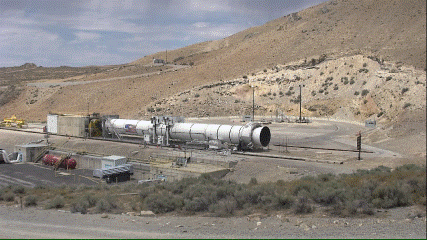
Steering these mighty machines is a delicate process that involves complex mechanics.
Most racecars use a rack-and-pinion system to convert the turn of a steering wheel to precisely point the front tires in the right direction. While SLS doesn’t have a steering wheel, its powerful engines and solid rocket boosters do have nozzles that gimbal, or move, to better direct the force of the thrust during launch and flight.

Racecar drivers and astronauts are laser focused, keeping their sights set on the destination. Pit crews and launch control teams both analyze data from numerous sensors and computers to guide them to the finish line. In the case of our mighty SLS rocket, its 212-foot-tall core stage has nearly 1,000 sensors to help fly, track, and guide the rocket on the right trajectory and at the right speed. That same data is relayed to launch teams on the ground in real time. Like SLS, world-champion racecars use hundreds of sensors to help drivers and teams manage the race and perform at peak levels.

Knowing how to best use, manage, and battle the physics of going fast, is critical in that final lap. You can learn more about rockets and racecars here.
Make sure to follow us on Tumblr for your regular dose of space!
#NASA#Artemis#Moon#Space Launch System#rocket science#space#exploration#Moon 2024#rocket testing#racecar#tech#technology#motorsport
1K notes
·
View notes
Text

Custom 1953 Muntz Jet Convertible
This 1953 Muntz Jet convertible underwent a three-year custom build under previous ownership, and it was purchased by the seller in 2021. The car is powered by a fuel-injected 5.7-liter LT1 V8 engine paired with a four-speed automatic transmission and a Ford 9″ rear end, and it is finished in Apple Pearl with a white Carson-style removable top over gray snakeskin-style Naugahyde upholstery. Features include custom bodywork, an Art Morrison frame, power-assisted steering, four-wheel disc brakes, airbag suspension, Painless Performance wiring, and more modified and fabricated details. This custom-built Muntz is now offered with a copy of Rodder’s Journal magazine featuring a story on the build and a clean California title in the name of the seller’s business.
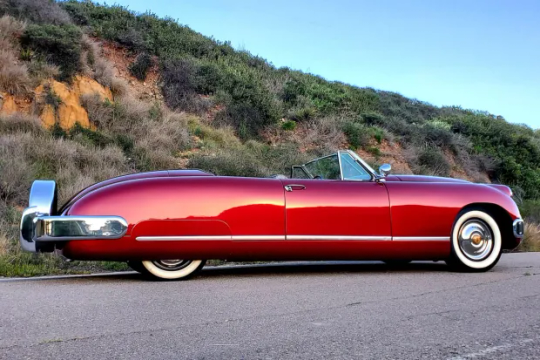
Custom 1953 Muntz Jet Convertible
The steel, aluminum, and fiberglass body is mounted on an Art Morrison ladder frame that was boxed and finished in semi-gloss black, and the floor was raised 3″. The exterior was repainted in a Sherwin Williams two-stage Apple Pearl mixed by the late Stan Betz. Features include a chopped Duvall-style windshield, 1950 Chevrolet headlights, dual Appleton spotlights, 1951 Ford Victoria side windows, and a white removable Carson-style top fabricated to match the height of the chopped windshield. Additional equipment includes color-matched rear fender skirts and chrome bumpers. Wear from fitting the top is noted on the rear deck.
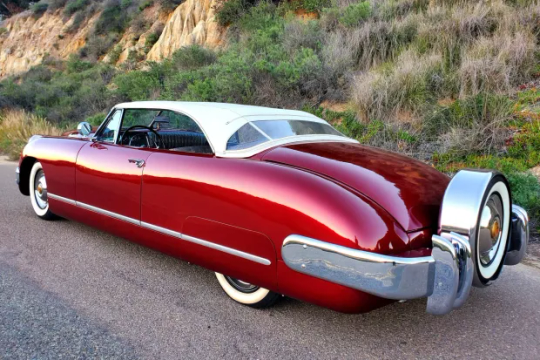
Custom 1953 Muntz Jet Convertible
Steel wheels sourced from a 1976 Dodge measure 15″ and are mounted with Cadillac Sombrero-style covers and whitewall tires. A matching spare fitted with a BFGoodrich Silvertown tire is mounted within a rear-mounted Continental-style chrome carrier. A Mustang II front end accommodates power rack-and-pinion steering , and the car rides on an electronically-adjustable Air Ride Technologies airbag suspension system along with 2” lowered front spindles, Strange Engineering tube shocks, a rear Panhard bar, and front and rear sway bars. The seller reports that the front control arm bushings were recently replaced.
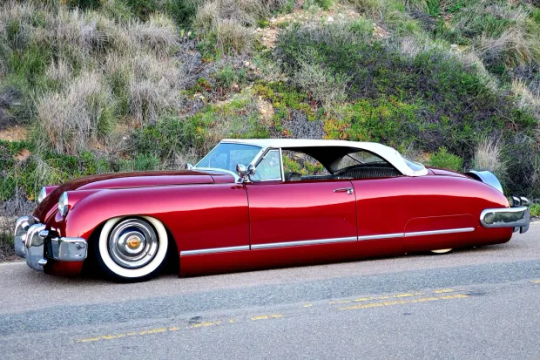
Custom 1953 Muntz Jet Convertible
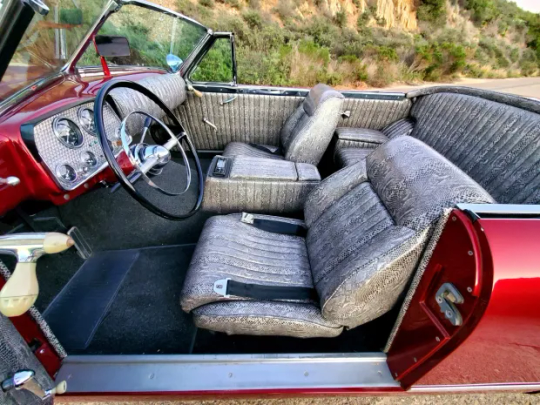
Custom 1953 Muntz Jet Convertible
Braking is handled by GM G-body-sourced calipers matched with Ford Granada discs up front and Ford SVO-specification calipers and discs at the rear.
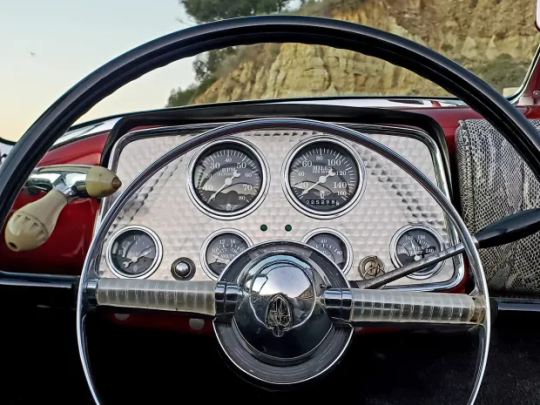
Custom 1953 Muntz Jet Convertible
The cabin was customized by Jim’s Auto Trim of San Diego, California, and features Glide bucket seats and a rear bench trimmed in gray snakeskin-style Naugahyde upholstery, along with matching treatments for the dash trim, headliner, and door panels. Additional equipment includes a 1952 Lincoln steering wheel mounted to a shortened Lincoln steering column, gray cut-pile carpet, and a Pioneer stereo housed within a custom center cubby.
The engine-turned “Hollywood” instrument cluster houses Stewart Warner gauges consisting of an 8k-rpm tachometer, a 160-mph speedometer, and auxiliary readings for fuel level, battery charge, oil pressure, and water temperature. The five-digit odometer displays 25k miles, though total chassis mileage is unknown. A Lokar pedal assembly was fitted during the build.

Custom 1953 Muntz Jet Convertible
The Corvette-sourced 5.7-liter LT1 V8 features a polished fuel intake manifold along with billet aluminum valve covers, and additional features include an Opti-Spark distributor, a Griffin aluminum radiator, and a wiring loom sourced from Painless Performance Wiring. A set of long-tube headers are connected to a 2.5″ exhaust system equipped with dual Dynaflow mufflers. The seller reports that the oil was recently changed.
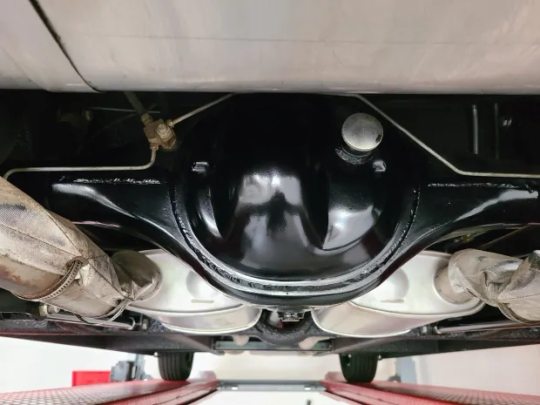
Custom 1953 Muntz Jet Convertible
Power is routed to the rear wheels via a four-speed 4L60E automatic transmission and a Ford 9″ rear end with with 3.55:1 gears and Strange Engineering 31-spline axles. Additional photos of the underside, drivetrain, and suspension components are presented in the gallery below.
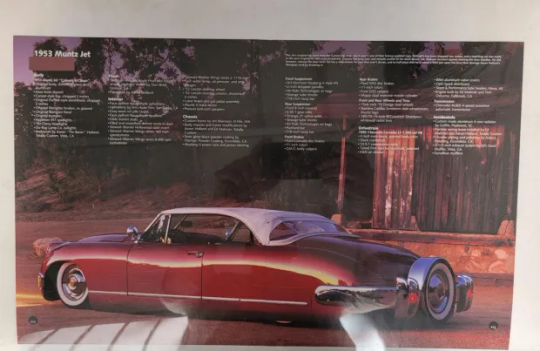
Custom 1953 Muntz Jet Convertible
The car was featured in issue #36 of Rodders Journal magazine
#Custom 1953 Muntz Jet Convertible#Custom 1953 Muntz Jet#Muntz Jet Convertible#Custom Muntz Jet Convertible#Muntz Jet#Convertible#car#cars#muscle car#american muscle
110 notes
·
View notes
Text






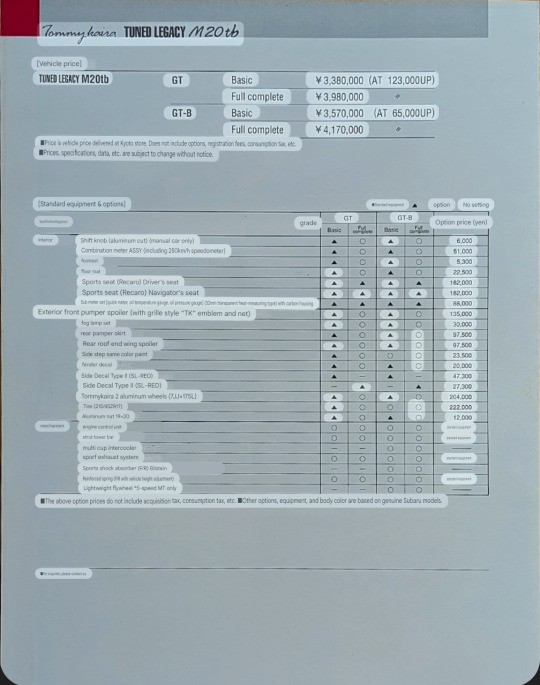

Tommykaira Tuned Legacy M20tb.
TUNED LEGACY M20tb
The challenge from GT to racing sports, the fastest wagon
Tommy Kaira's pedigree on the wagon. TUNED LEGACY M20tb, the flag bearer of the wagon era
A high level of perfection that can only be achieved by Tommy Kaira's complete car, which pursues total balance. Thorough pursuit of the well-established BOXER-4. The 297 horsepower produced by its reliability and high level of perfection gives it the edge of a sports car, and even though it is a wagon, it is enough to stimulate the true sports car mindset.
The torquey power that rises smoothly from the low rotation range brings you a world of endless possibilities.
It makes wagonists forget about the body and truly invites them into the world of sports cars.
The suspension tune is also the traditional Tommy Kaira tune, and its biggest appeal is the unique flavor that pursues the fun of sports driving while taking advantage of the appeal of 4WD.
The M20tb will demonstrate its true worth in all environments and conditions, including winding roads, highways, and if you're looking for a full-fledged circuit.That's the true joy of driving with the M20tb.
Powerful form
The front bumper spoiler, rear bumper spoiler, and roof end spoiler are Tommy Kaira Aero originals, and 17-inch wheels and tires are standard on the suspension. Completely tuned car, Tommykaira's status is modeled. It can be said that it is an object that harmonizes with any world in which wagonists drive.
SPECIFICATIONS
Max Output: 297ps/6600rpm
Max Torque: 35.3kgm/5800rpm (GT-8:5MT)
Max Output: 278ps/6600rpm
Max Torque: 33.3kgm/5800rpm (GT-8: AT)
Max Output: 270ps/6400rpm
Max Torque: 32.8kgm/5300rpm(GT: 5MT.AT)
BODY Length: 1680mm Width: 1695mm Height: 1490mm Wheelbase: 2630mm Tread: Front 1470mm Rear 1460mm.
■ENGINE
BOXER MASTER-4, DOHC 4cam 16Valve Twin Turbo with Multi-cup Intercooler Bore x Stroke: 92.0mm×75.0mm Piston Displacement: 1994cc
LAYOUT 4Wheels Drive 5-Speed Manual/E-4AT
Brakes: 2Piston Type Caliper+Ventilated Disk
Wheels: 7.0Jx17(Front & Rear)
Tire: 215/45ZR (Front & Rear)
Suspension: Strength Sports Spring
Steering: Rack&Pinion
●Interior
A comfortable design that lets you enjoy sports driving.
It features a shift knob made of aluminum, a 20-meter console that stands out in Tommy Kaira red, and an original meter made of three-dimensional carbon.
●Engine
Tommykara
The 297 hp power effortlessly guides the driver into the experience zone from the moment the car starts. Easy-to-handle engine characteristics are the hallmark of Tommykans.
●Front view
The originally designed spoiler with large openings above and below the bumper line maximizes cooling effectiveness. Together with the large integrated sub-light, it creates an impressive front view.
●Rear view
The fiberglass sports stabilizer and spoiler create a dynamic range that improves stability through downforce at high speeds.
●Fender decal/side decal
Flowing Tommykara, the confidence of a tuned car.
37 notes
·
View notes
Photo




1959 BMW 700 coupe
Love those little badass cars.. motorcycle engine on a car.
The 700 weighed little – around 659kgs – and the rear mounted, motorcycle-derived, twin-cylinder, 697cc engine was an ingenious design producing 30bhp in original form breathing through a single Solex carburetor. Improved brakes and rack and pinion steering endowed the 700 with excellent driving characteristics. Later variants included the 40bhp 700 Sport, with twin carburetors, and the Luxus on a longer wheelbase. Unlikely as it seems, the 700 in RS form performed well in motorsport, with Hans Stuck winning the 1960 German Hill Climb Championship and Walter Schneider taking the 1961 German Saloon Car title.
https://www.silverstoneauctions.com/tba-bmw-700-rec10372-1-stoneleigh-0321
62 notes
·
View notes
Text
0 notes
Text
Crane Truck

Felt like building the 8446 Crane Truck, or as Bionicle fans may know it: the one source of green panels that allow you to attempt to make the boat from MNOG.
Just a real rough studio export job, studio really sucks for techinic building, should have just exported the parts out and assembled it in blender. Maybe one day I'll do it properly.
Its quite neat how many Slizer parts it has, the feet, a fully utilised gearbox, and two heads in set exclusive colours. Its basically a Slizer, really.



The rigging was fun though, for the most part. I've never done rack and pinion steering before. The shock absorber on the pincer was annoying so I gave up after spending like two days on it lol.
35 notes
·
View notes
Text
..
Ofc I think I'm doing the right thing by paying $150 for a mechanic to come to my house and diagnose my car.
Call Ford with those results and they tell me the cost ($2300 + tax) to fix it But Then Wait There's More
Because apparently the rack + pinion (what they quoted me for) and the PCM have the SAME symptoms and the SAME THING happens when they're bad.
So of course, the rep said they'll want to look at my car and make sure it's actually the rack and pinion bc if it's not and the rack and pinion are replaced then my car could STILL not have power steering.
And? I just spent the $150 yesterday to have someone look at it. But they didn't have the actual tools Ford has that can accurately tell them which part is actually bad.
So of course I need to spend ANOTHER $150 plus the cost to have my car towed there (another 80 to 100 dollars) for them to do more diagnostics on it.
I genuinely thought I was doing the right thing by having a mechanic come out to look at it. But apparently I just wasted money by doing that.
I want to cry. I don't know what to do. I barely have any money as it is and I genuinely have no idea how I'm going to get my car fixed now. It's not even paid off. I still have a little over 1000 to pay on it???
I can't afford to fix this. I can't even afford to get it to Ford to 100% confirm the issue.
I have uh what. $20? perfect. that'll fix my car.
#personal.exe#vent#this is of course about my car#i need things to stop kicking me in the balls when im down
2 notes
·
View notes
Text





Jaguar XK140 MC Fixed Head Coupé, 1955. The XK140 built on the success of the XK120, with more interior space, improved brakes, rack and pinion steering, increased suspension travel, and telescopic shock absorbers.
#Jaguar#Jaguar XK140#Jaguar XK140 MC Fixed Head Coupé#Jaguar XK140 FHC#1955#1950s#DOHS#British Sports Car
237 notes
·
View notes